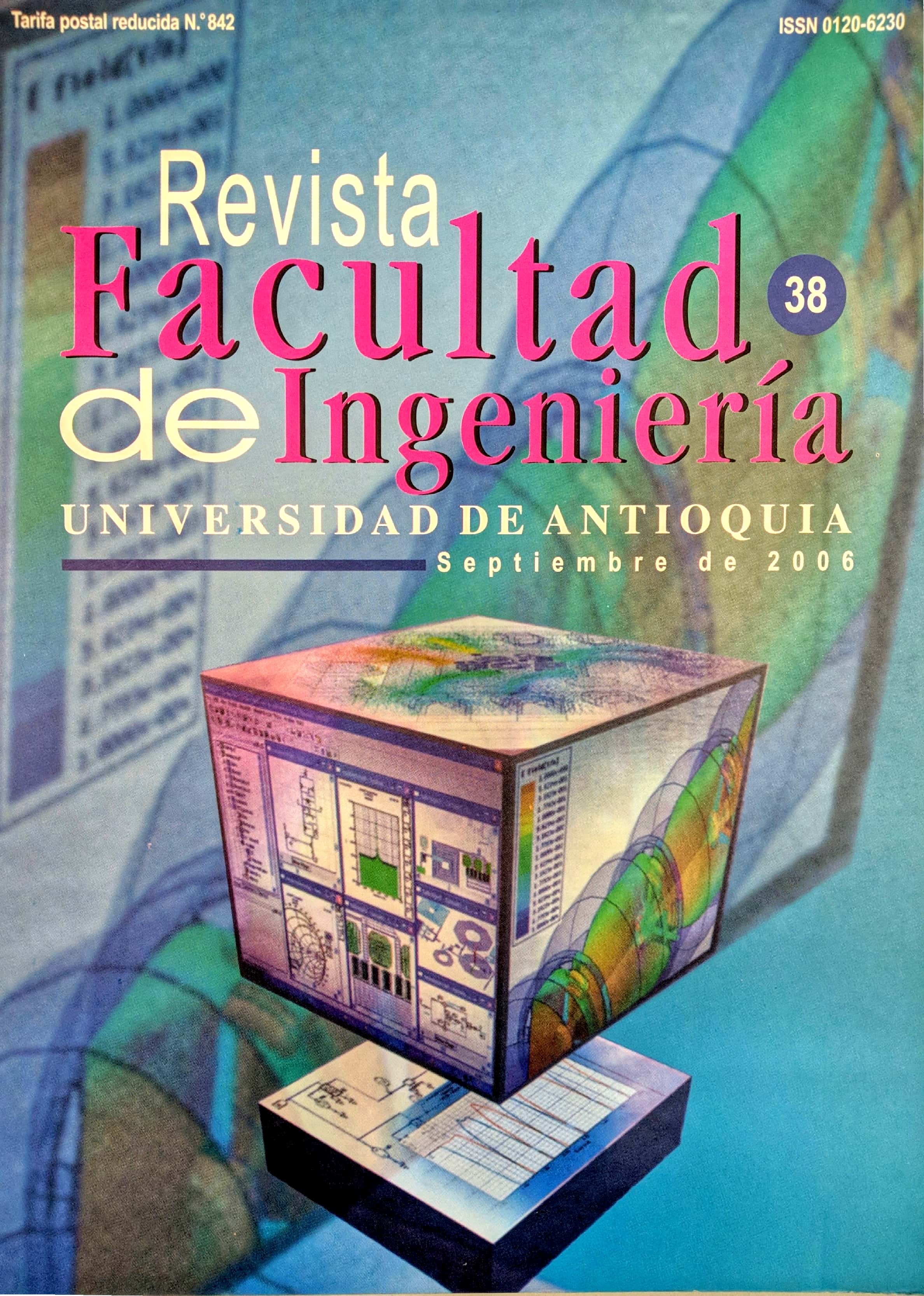Membrane processes for treatment of acid yellow color 23 highly loaded residual waters
DOI:
https://doi.org/10.17533/udea.redin.343231Keywords:
Membranes of filtration, membranes systems, nanofiltration, acid yellow 23, treatment of industrial waste waterAbstract
Dyes present in industrial effluents can either be treated and destroyed by physicochemical or biological processes, or recovered and recycled to the initial process. The recovery of the dye is economically attractive if (a) is an expensive product and (b) is present in significant amounts and/or concentrations. Moreover, recovery of the dye is more difficult in the wastewaters that in the intermediate stages of the process. Membrane technology offers one alternative for the recovering of dyes. The performance of the nanofiltration membrane NF90SR for the recovery of the Acid Yellow 23 dye, which is widely used in the coloration of textiles or in food manufacturing, was studied. Colour removal above 97% was observed. Also, a permanent diafiltration process, achieving up to 90% elimination of the salt present in the solution, was implemented in order to enhance the economic value of the residue.
Downloads
References
CEPIS y GTZ. Impacto ambiental de productos químicos auxiliares usados en la industria textil. Repamar Argentina. Buenos Aires. 1998. Anexo IV. P. 81.
L. F. Thome; L. de las Fuentes; A. Urkiaga; J. Font, Posibilidades de los procesos de membranas en ingeniería medioambienta. Ingeniería Química Madrid. Vol. 30. 1998. pp. 137-146.
G. Ciardelli, L. Corsi, M. Marcucci, “Membrane separation for wastewater reuse in the textile industry”. Resources, conservation and recycling. Vol. 31. 2000. pp. 189-197. DOI: https://doi.org/10.1016/S0921-3449(00)00079-3
AWWA Tratamiento del agua por procesos de membranas: principios procesos y aplicaciones. McGraw-Hill. 1.ª ed. Madrid. 1998. p. 864.
CH. Munir, Ultrafiltration Handbook. Technomic Publishing Co Inc. 1986.
CH. A. Bucley, “Membrane technology for the treatment of dye house effluents”. Water Science and Technology. Vol. 25. 1992. pp. 203-209. DOI: https://doi.org/10.2166/wst.1992.0248
M. Marcucci, G. Nosenzo, G. Capannelli, D. Ciabatti, G. Ciardelli. “Treatment and reuse of textile effluents based on new ultrafiltration and other membrane technologies”. Desalination. Vol. 138. 2001. pp 75-82.
M. Marcucci, G. Nosenzo, G. Capannelli, D. Ciabatti, D. Corrieri, G. Ciardelli, L. Corsi L. “Treatment and reuse of textile effluents based on new ultrafiltration and other membranes technologies” Desalination. Vol. 138. 2001. pp. 75-82. DOI: https://doi.org/10.1016/S0011-9164(01)00247-8
Downloads
Published
How to Cite
Issue
Section
License
Revista Facultad de Ingeniería, Universidad de Antioquia is licensed under the Creative Commons Attribution BY-NC-SA 4.0 license. https://creativecommons.org/licenses/by-nc-sa/4.0/deed.en
You are free to:
Share — copy and redistribute the material in any medium or format
Adapt — remix, transform, and build upon the material
Under the following terms:
Attribution — You must give appropriate credit, provide a link to the license, and indicate if changes were made. You may do so in any reasonable manner, but not in any way that suggests the licensor endorses you or your use.
NonCommercial — You may not use the material for commercial purposes.
ShareAlike — If you remix, transform, or build upon the material, you must distribute your contributions under the same license as the original.
The material published in the journal can be distributed, copied and exhibited by third parties if the respective credits are given to the journal. No commercial benefit can be obtained and derivative works must be under the same license terms as the original work.










 Twitter
Twitter